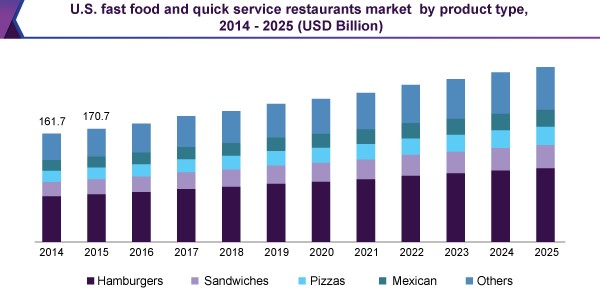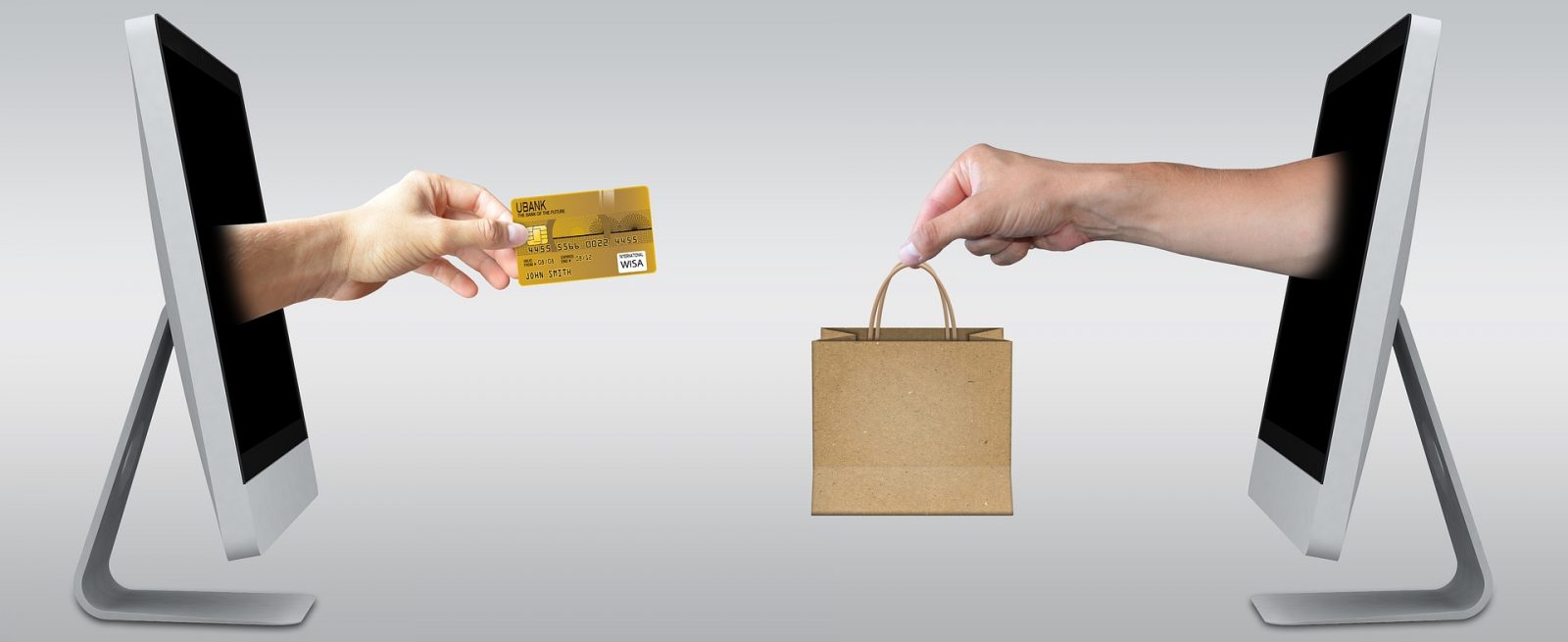Impact of E-Commerce on QSR Market Position
4 Min Read By Varun Juyal
Amalgamation of e-commerce and technology in the food & beverage industry has been transforming its demeanor according to the taste of millennials. In the early 21st century, e-commerce has been evolved as a major contender to the brick and mortar retail industry, in contrast to its role of an ally to the quick service restaurants.
Digitization has positively impacted the consumer behavior. In 2018, the U.S. fast food industry reported a more than 35 percent of the consumers using online food delivery services regularly. e-Commerce industry has developed standard operating procedures with the inclusion of various technologies including GPS to combat the complex logistics and catering the growing consumers’ demand.
Service providers such as Zomato, Ubereats, Grubhub, FoodPanda, Swiggy, Grubhub, Deliveroo, Just Eat, DoorDash and Postmates have been striving to adhere to regulatory constraints for delightful customer experience. Quality, safety, labelling, authenticity, quick and temperature-controlled transportation are the most vital regulatory entails. The impact can be observed on various elements of these services. Packaging, one among these elements, demonstrates the swift alteration it has undergone in a limited time frame. The focus, initially, was towards making spill proof packets, which later changed towards making these visually appealing and convenient for dining. The golden rule for constant modification, enforced the food delivery service organizations to further embrace tamper-resistant packaging.
Over the past few years, the U.S. economy has seen increased number of e-commerce food service companies. As of 2018, GrubHub was one of the key industry participants in food service sector in the U.S. Uber Eats is the second most used service provider. They are further followed by DoorDash, Postmates, and Caviar.
Inclusion of Advanced Mobile Apps
The disruption in the technology assures availability of food at a touch. Mobile phones are the new point of sale and will eventually grow to become the most used one, considering the penetration of the devices. e-Commerce players have made sure to create all encompassing, user friendly, smart phone applications for addressing the customers’ convenience. The number of smart phone users are much higher as compared to the desktop users, due to which mobile apps leave e-commerce sites far behind in terms of the number of users. Moreover, these apps are packed with features which makes ordering food exceptionally convenient. They remember user preferences, detect location automatically, give gazillions of options, provide discounts and offer various payment options. All of these together makes ordering a fun experience for customers.
A vast number of payment options has played a critical role in the rapid adoption of ordering via e-commerce from quick service restaurants. Originally, cash-on-delivery was an appreciated method and buyers relied on it heavily but with economies moving towards cashless mode, a pool of methods has erupted to substitute cash. Major economies including Singapore, Netherlands, France, Sweden, Canada, Belgium and UK register more than 50 percent of their transactions in cashless mode. Thus, for the ease of payment and an overall of healthy experience platforms have started adopting a wide variety of payment methods including card payment, net banking, mobile banking, unified payment interface and many others.

Increasing Adoption of E-Commerce Portals
The U.S. fast food and quick serving restaurants are expected to get mobile orders worth USD 40 billion by 2020. Quick service restaurants including McDonald’s, Subway, Burger King, Wendy’s, Starbucks, Taco Bells, Dunkin Donuts, Pizza Hut, KFC have been vocal about the role of e-commerce in their sales. Most of these for end-to-end service have come up with their own application and delivery service. McDonald’s came up with the app in 2015 and has since then, accumulated more than 10 million constant users of the service. Similarly, Subway’s application has more than five million users of the service.
Quick service restaurants are endeavoring to expand their customer base rapidly and adoption of e-commerce platforms have become an important business tool. Other than profitability, it helps the players in improving their overall performance. Every application today has been modified to include review and rating from customers. Restaurants and eateries can figure out the spots which are making their customers unhappy and address their grievances. At the same time, they act as credibility and can enhance the sales. Good reviews lead to better customer loyalty. Overall the feature encourages a better customer engagement, a key to successful business.
Endeavor Toward Customer Delights
E-commerce platforms have been determined for customer delight from all aspects. A large assortment of restaurants and eateries helps catering to a wide range of customers. A single platform offers American, Mexican, Thai, Greece, Indian, Japanese, Spanish, French, Chinese, and Italian cuisine. From the same platform, at the same time, a customer has the luxury of ordering clam chowder, enchiladas, som tam, spanakopita, dosa, sushi, churros, macarons, dim sums and pizza. Quick and temperature-controlled delivery systems have made the process easier than ever.
Services providers have formed strategies to target specific customer needs. Organization including Sun basket, Home Chef, EveryPlate, Freshly, Purple Carrot, Gobble, Martha & Marley Spoon, Plated and Hello Fresh are positioning themselves in the market as fresh, healthy and diet conscious food deliverers. Sun Basket calls itself appropriate for anyone and everyone on dietary restrictions whether the customers are vegan, vegetarian, diabetic or gluten conscious. In addition, these platforms also offers discounts and free delivery schemes.
Implementation of New Strategies
The food delivery organizations are rapidly changing their strategy to expand their customer base. Many of them including Swiggy are targeting corporates. The inclusion of B2B segment can expand business manifolds. The e-Commerce platforms having been taking over corporate cafeterias and turning them over into digital cafeterias. Swiggy Café allows the employees to order food in their cafeteria from their desk and collect when they are ready. This cuts the traffic in the cafeteria making the order flow manageable. Another important trend that has been noticed is ride hailing services entering into the market. Uber has come up with UberEats and Ola, an Indian ride hailing company has entered into the industry by partnering with FoodPanda.
References:
https://www.sana-commerce.com/blog/shorten-time-market-e-commerce-food-beverage-industry/
https://www.lek.com/insights/ei/ecommerce-packaging-food-beverage
https://www.reuters.com/brandfeatures/venture-capital/article?id=18598
https://www.vantiv.com/vantage-point/smarter-payments/ecommerce-trends-affecting-restaurants


